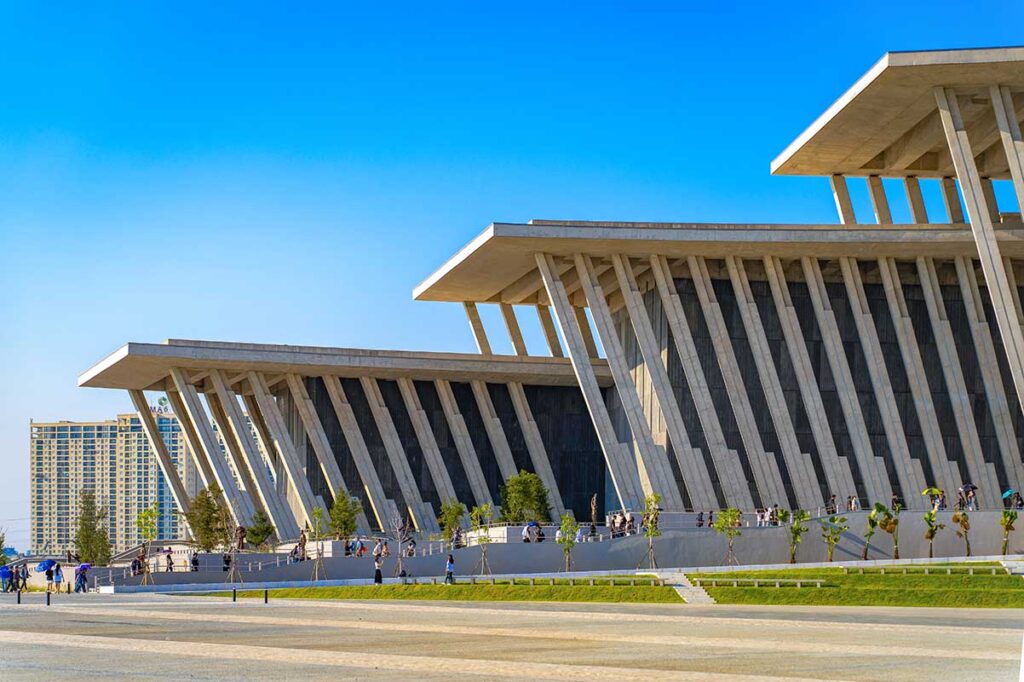About the Vietnam Military History Museum
A brief history
The Vietnam Military History Museum was first established in 1956 and officially opened in 1959, originally located in the center of Hanoi near the Hanoi Flag Tower and the Imperial Citadel of Thang Long. For many years, it served as one of the main places to learn about Vietnam’s military past, especially the wars against the French and the Americans.
Over time, the museum was renamed, expanded, and reorganized, but the old site became too small to hold the growing collection. In 2024, a brand-new museum opened in Nam Tu Liem District, about 13 km from the Old Quarter. This new location is more than five times larger, with a modern layout, improved facilities, and space to display thousands of artifacts—many of which were previously in storage. It’s now one of the most advanced museums in Vietnam in terms of both scale and technology.
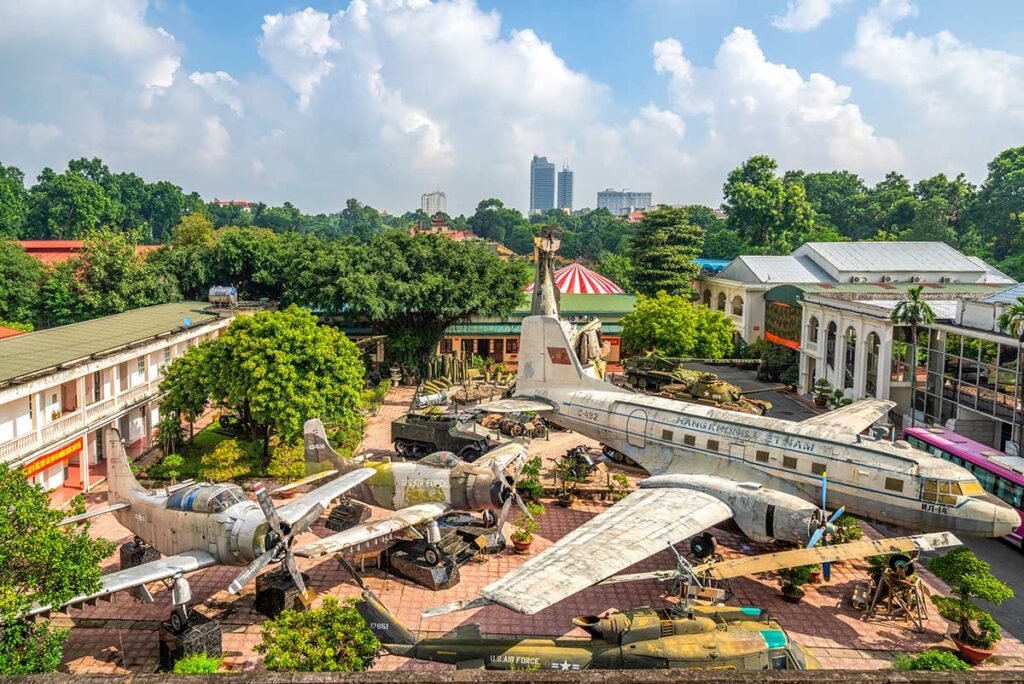
What’s on display
The museum has over 150,000 artifacts, covering more than 2,000 years of Vietnamese military history. These range from ancient bronze weapons to modern tanks, fighter jets, and missile systems. Four of these items are officially listed as National Treasures, including a T-54B tank and two MiG-21 fighter jets.
The exhibitions are split into two main zones:
- Indoor areas: Spread across four floors, these rooms follow a chronological and thematic layout—from early resistance wars against China to the French and American conflicts, all the way to post-war defense and modernization. Some rooms use 3D mapping, videos, and interactive displays, while others rely on historical photos and documents.
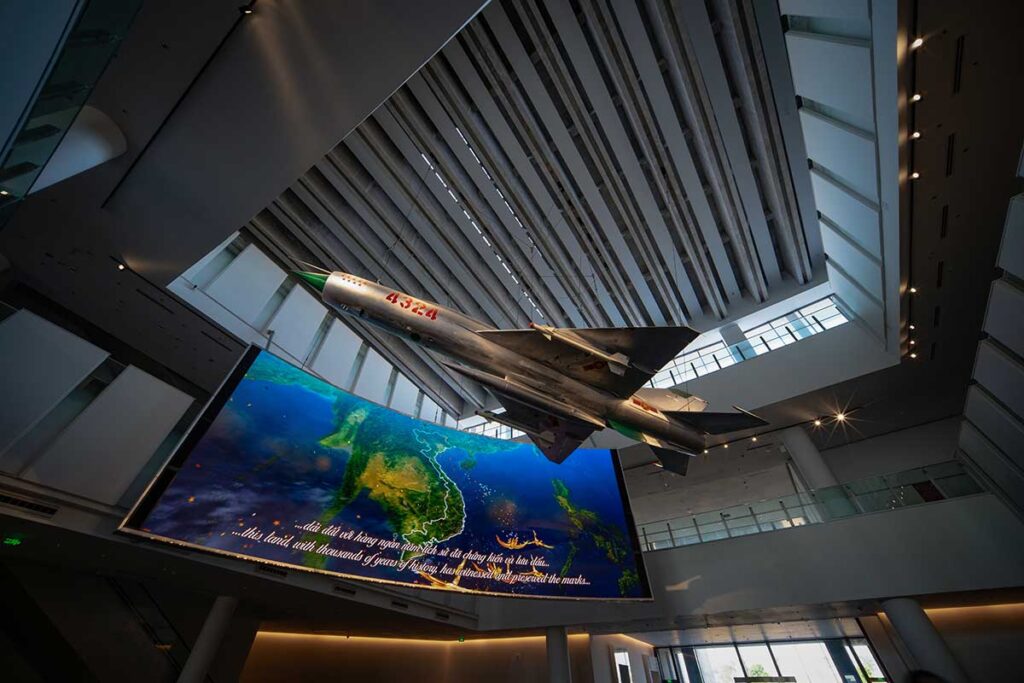
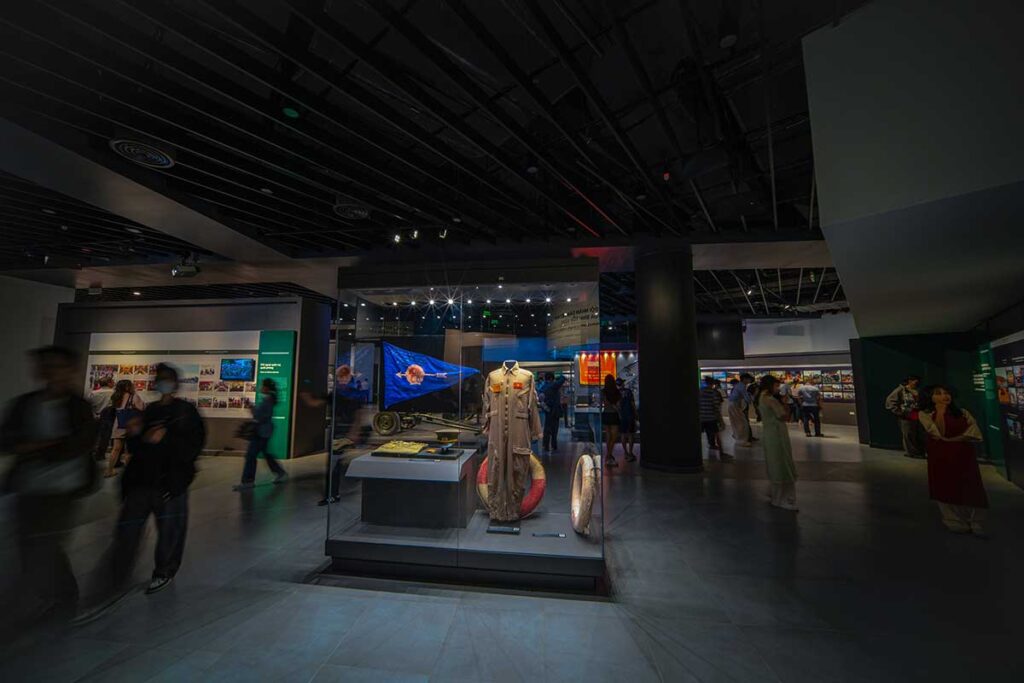
- Outdoor areas: Outside, you’ll find a large open-air section with military vehicles, artillery, planes, and war wreckage. One side mainly features American-made equipment, the other side Vietnamese and Soviet-built machines. It’s a good chance to see some of the iconic hardware used during the Vietnam War up close.
While some explanations are detailed, others are minimal—so having some background knowledge helps. Most information is in Vietnamese, English, and French, but video and audio content is mostly in Vietnamese. The overall experience is part historical education, part visual impact.
Top highlights of the Vietnam Military History Museum
The Vietnam Military History Museum is big—both in size and in the amount of content it covers. While you could easily spend hours here, these are the main highlights to focus on during your visit:
1. Victory Tower
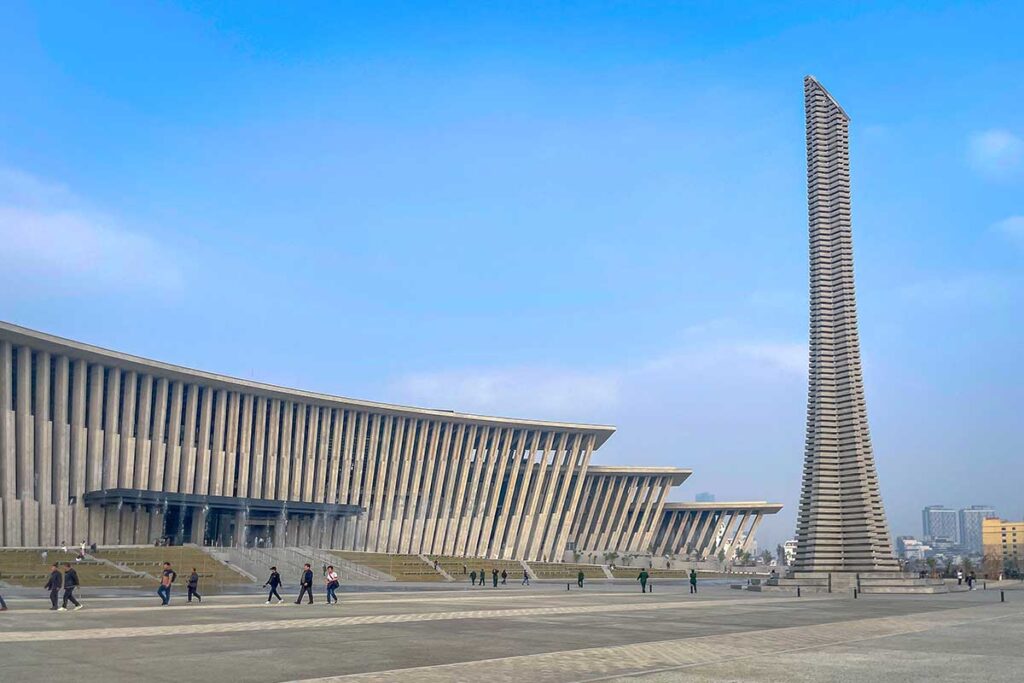
The Victory Tower is the first thing you’ll notice when you arrive. It’s a 45-meter-tall monument that stands at the center of the museum complex, topped with a gold star symbolizing national unity and victory. You can’t climb it, but it serves as a clear landmark and a photo spot. The design represents Vietnam’s strength and aspirations for peace after years of war.
2. National Treasures
The museum displays four officially recognized National Treasures, all linked to important moments in Vietnam’s military history:
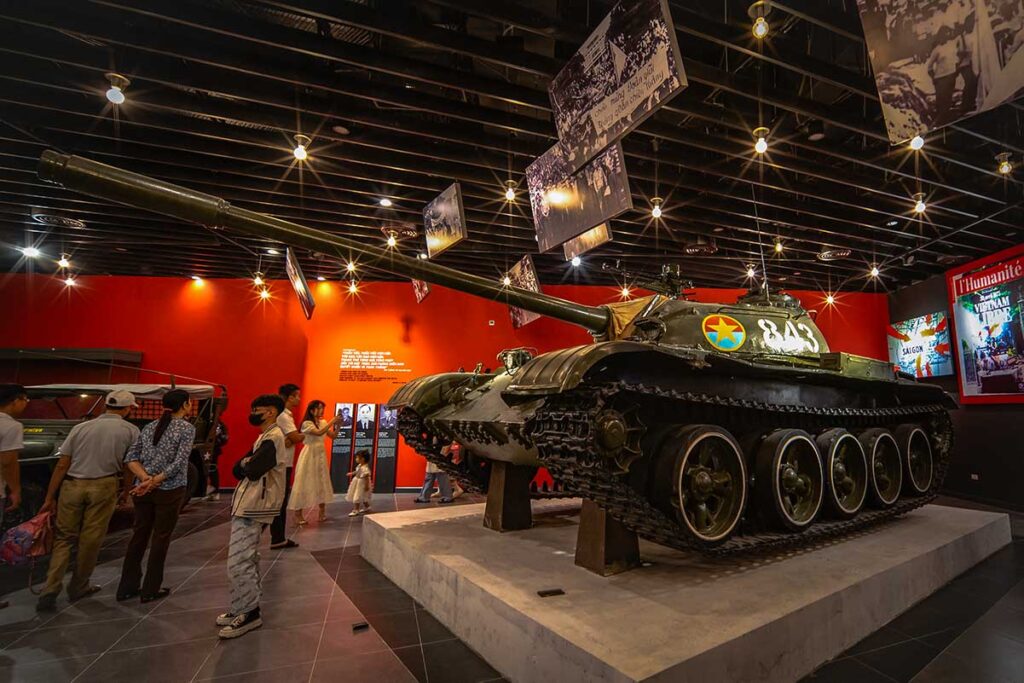
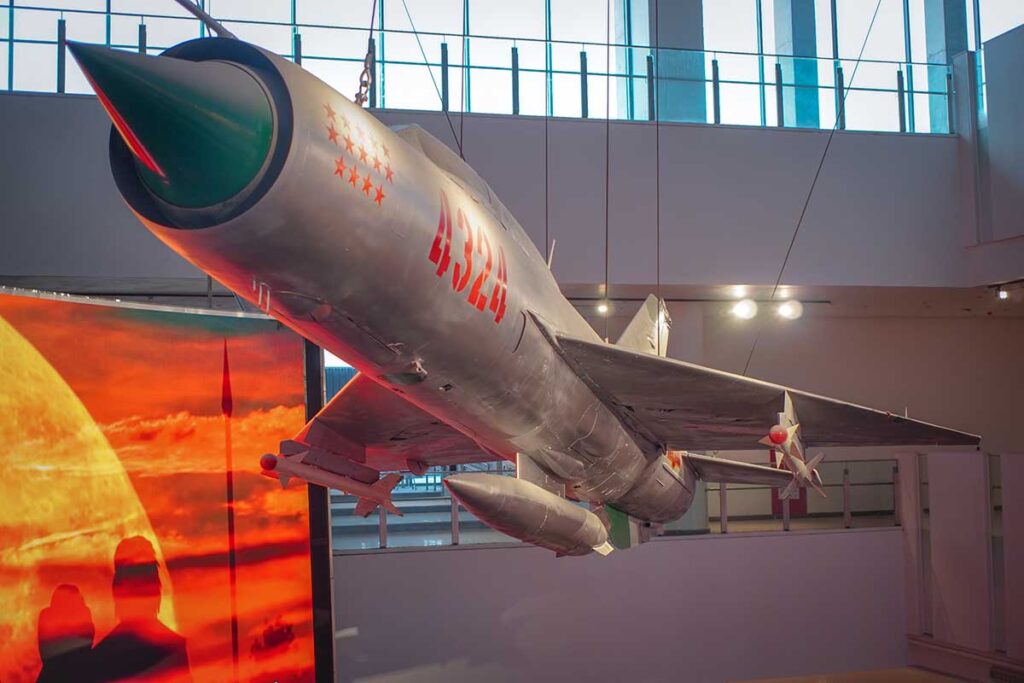
MiG-21 Fighter Jet No. 5121 – Shot down a U.S. B-52 bomber during the “Dien Bien Phu in the Air” campaign in 1972.
Ho Chi Minh Campaign Map – Used during the final military operation that led to the fall of Saigon.
These artifacts are placed prominently and explained with signage in multiple languages. If you’re short on time, these four items are among the most meaningful to see.
3. Outdoor war machines display
Outside the museum, you’ll find a large open-air area filled with tanks, aircraft, artillery, missile systems, and destroyed vehicles. Many of these were used in or captured during the Indochina and Vietnam Wars.
You’ll see:
- B-52 bomber wreckage
- Soviet-made T-34 and T-54 tanks
- American helicopters and fighter jets
- Anti-aircraft guns, howitzers, missile launchers
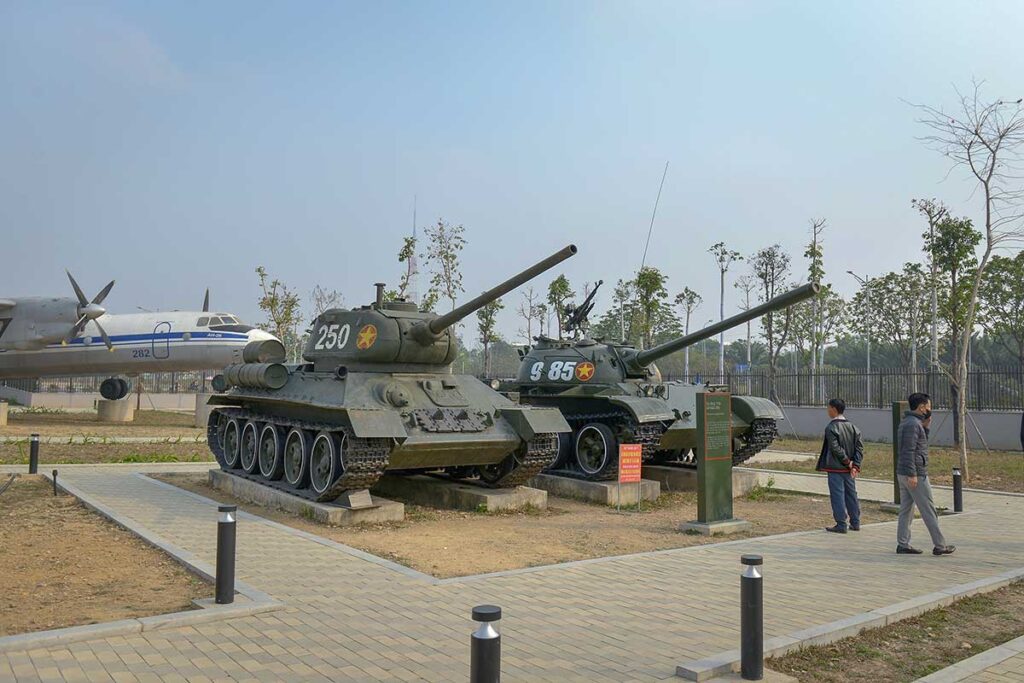
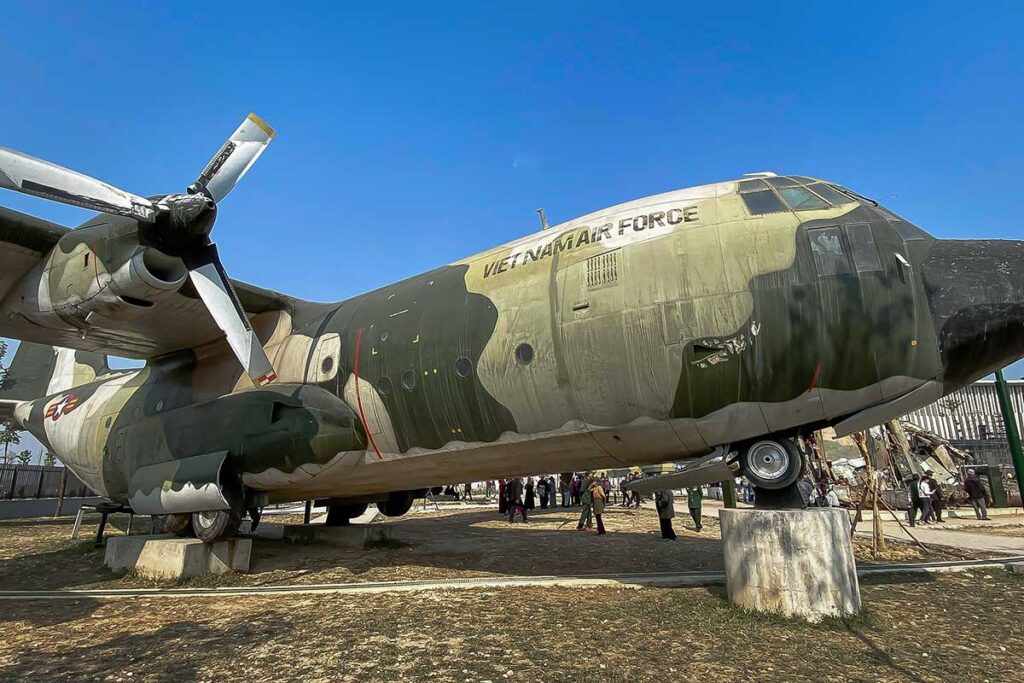
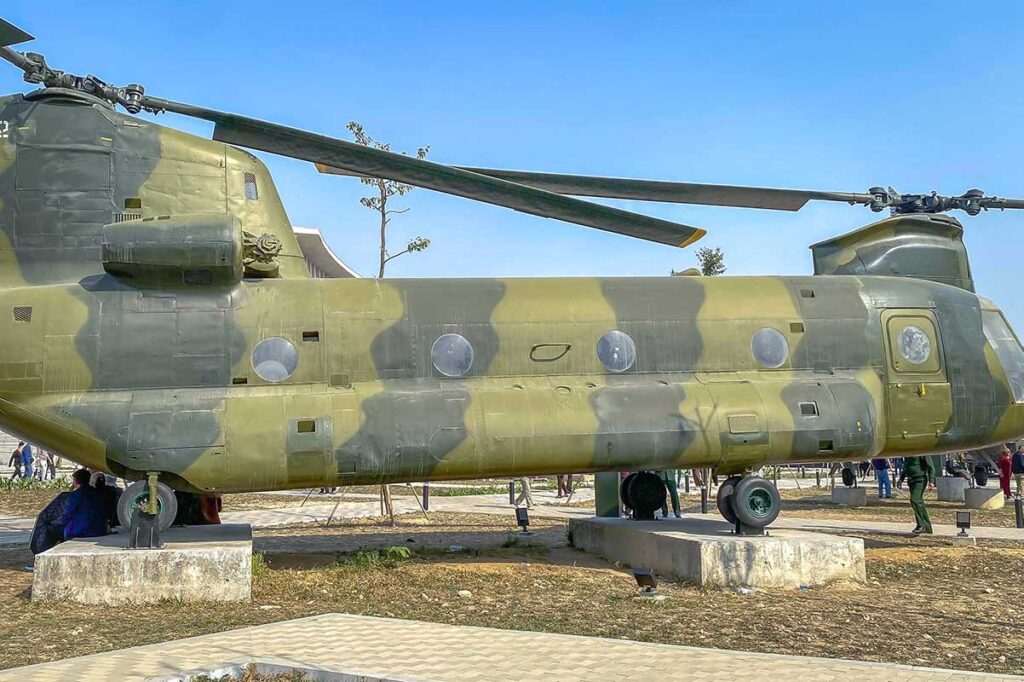
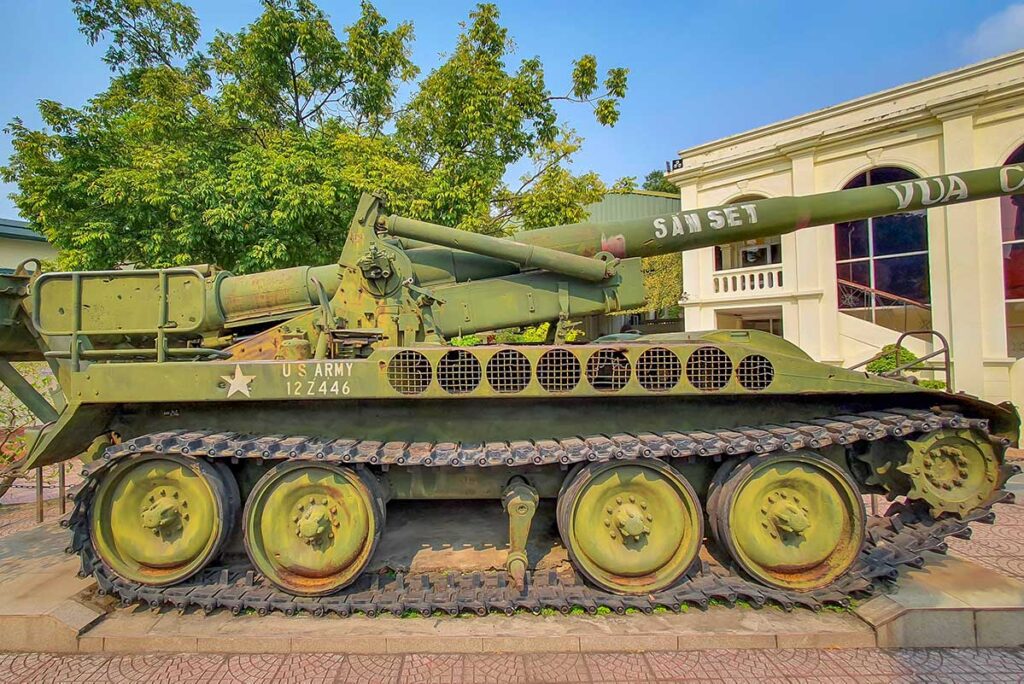
The layout divides equipment by origin—Vietnamese and Soviet on one side, American and allied equipment on the other. The atmosphere is often described as a “garden of broken toys”—a reminder of the scale of destruction during war.
4. Thematic exhibition halls
The museum’s indoor area is organized into six main themes, covering more than 2,000 years of resistance and war:
- Early Nation-Building and Defense
- Fighting Foreign Rule (939–1858)
- French Colonialism and Independence (1858–1945)
- First Indochina War (1945–1954)
- Vietnam War / Second Indochina War (1954–1975)
- Post-War Development and Modernization (1976–present)
Highlights inside include:
- A detailed model of Dien Bien Phu, complete with sound and lighting effects
- A reconstruction of Hien Luong Bridge, the former boundary between North and South Vietnam
- Displays of primitive weapons used during early resistance wars
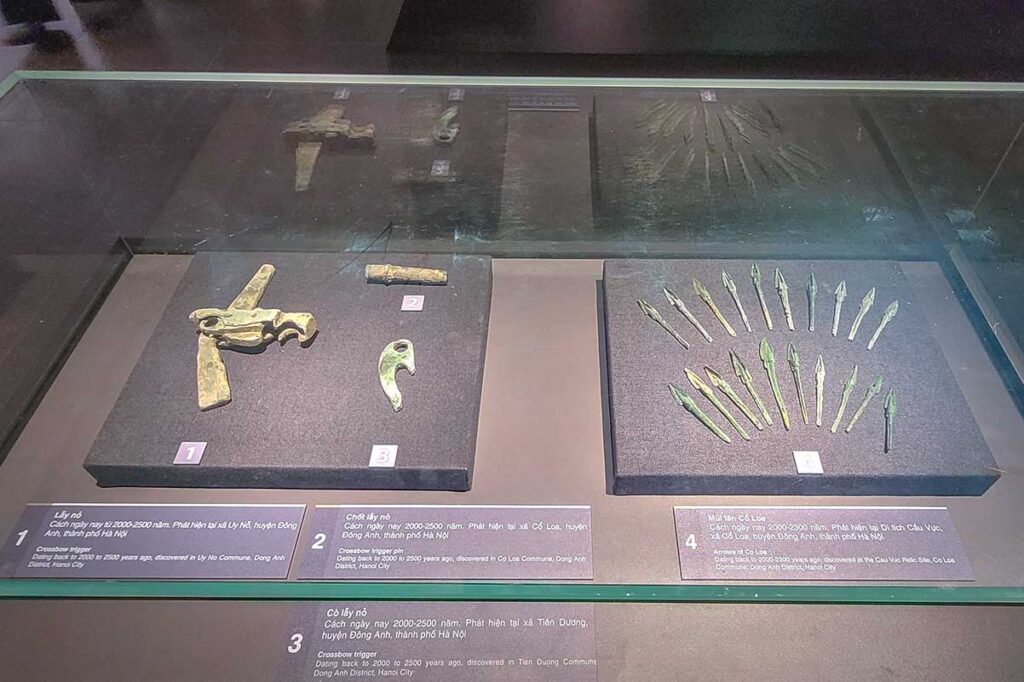
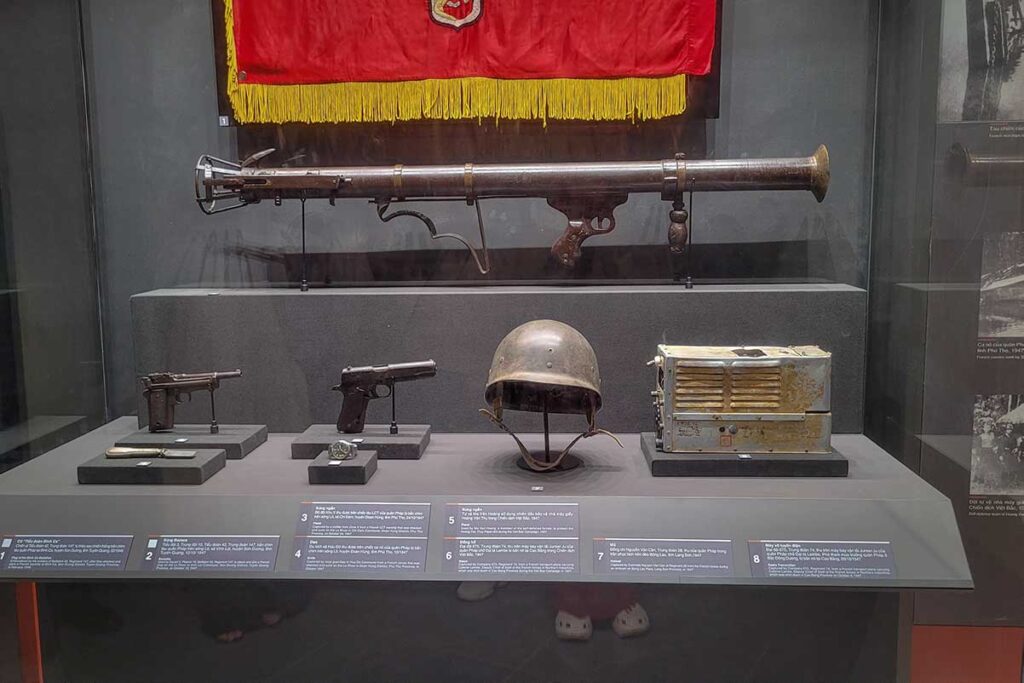
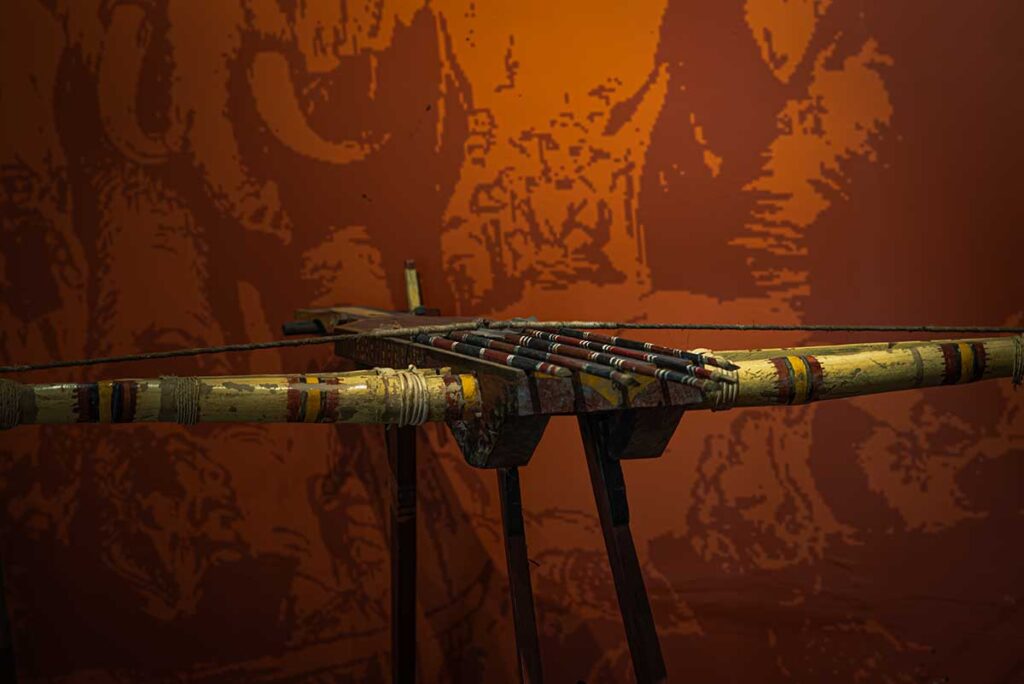
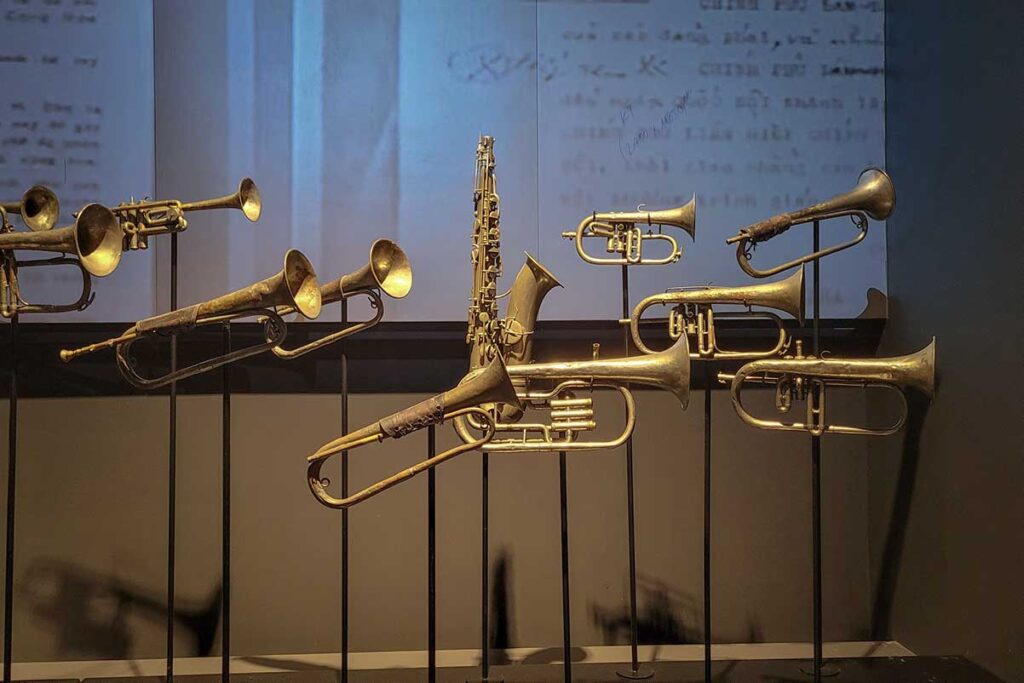
Each zone presents a mixture of real artifacts, photos, diagrams, and explanations. Some sections are more immersive than others, depending on the amount of media used.
5. Interactive & Tech Features
Unlike many museums in Vietnam, this one makes use of modern technology to create a more engaging experience:
- 3D mapping displays and digital battle recreations
- Large video walls with war footage and interviews
- Touchscreens and searchable photo archives
- QR codes next to exhibits (scan with your phone for extra info)
- Automatic audio guides (mostly in Vietnamese; English availability varies)
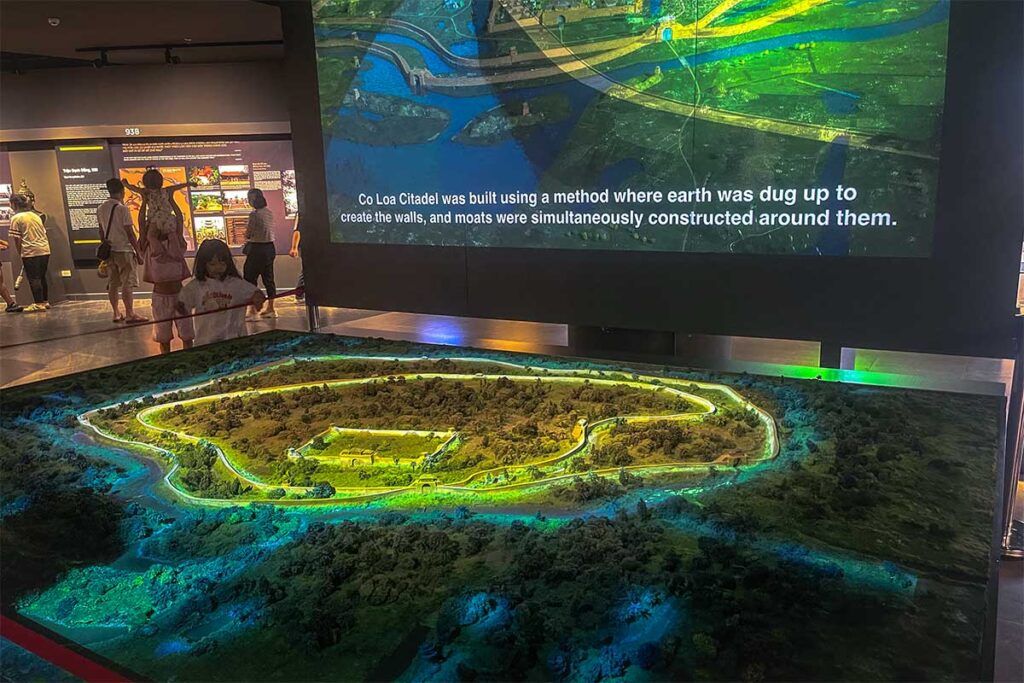
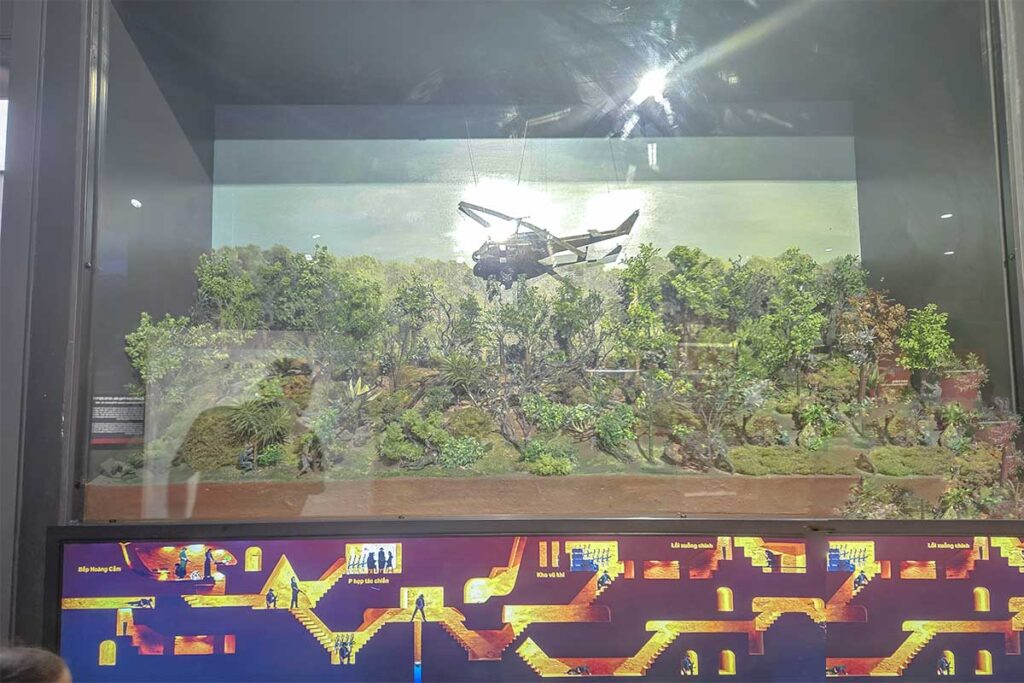
Over 60 short videos are integrated throughout the exhibition areas. Some explain key battles, others highlight the roles of individuals and units.
6. Human stories & Global solidarity
While much of the museum focuses on weapons and battles, there’s also a strong human element:
- Photos of soldiers, families, and village life during wartime
- Personal items like uniforms, letters, and handmade tools
- Displays about the role of Vietnamese Heroic Mothers
- International posters and messages of support from countries like Cuba, the Netherlands, Venezuela, and North Korea
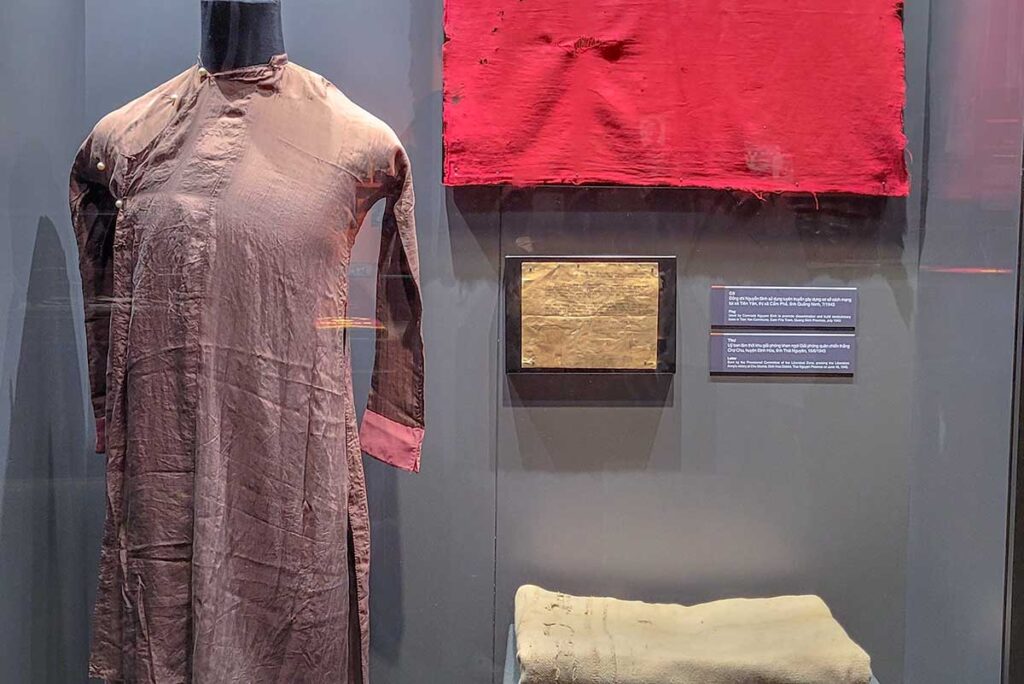
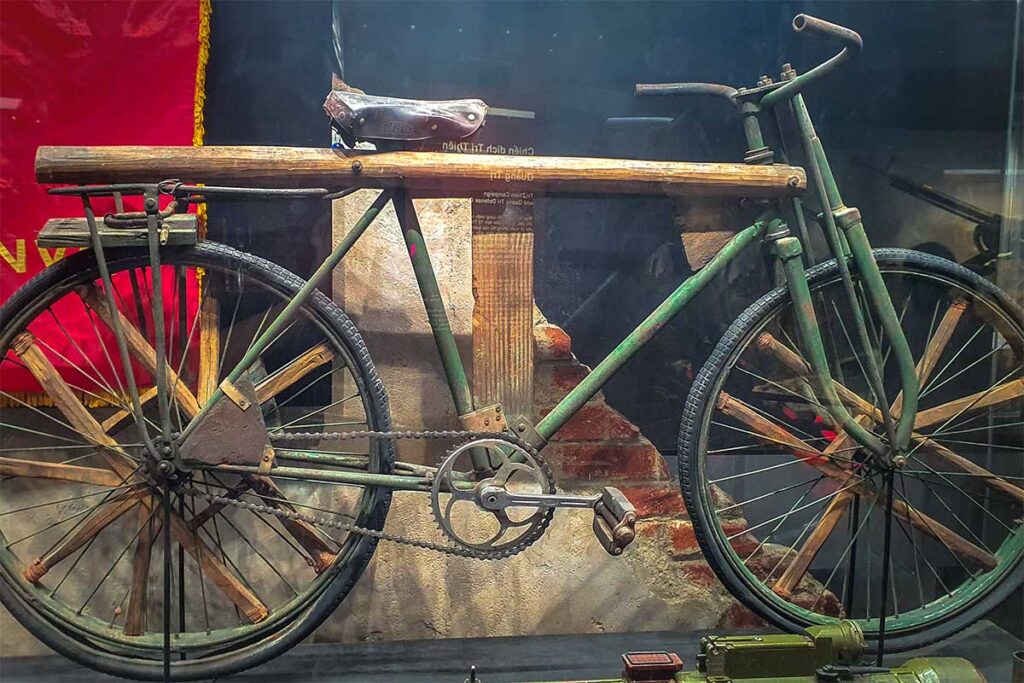
These exhibits help you understand the emotional side of Vietnam’s wartime experience—not just the victories, but the sacrifices as well. They also show how the Vietnam War became a global issue, with people around the world voicing opposition to the conflict.
Visitor information
Location
The Vietnam Military History Museum is now located at Km 6+500, Thang Long Avenue, Tay Mo Ward, Nam Tu Liem District, Hanoi. This is about 13 km west of the Old Quarter, and depending on traffic, it takes 25 to 40 minutes to get there by car.
Many people still assume the museum is in the city center, as it used to be at 28A Dien Bien Phu Street, near the Hanoi Flag Tower. That old site was officially closed in late 2024 and is now part of the Thang Long Imperial Citadel complex.
Entrance Fee
- Free entrance
Opening Hours
- Morning: 08:00 – 11:30
- Afternoon: 13:00 – 16:30
- Closed on Mondays and Fridays
It’s best to arrive early, especially if you want to avoid crowds or need more time to explore the full collection.
Facilities & Accessibility
- Language: Signage is in Vietnamese, English, and French. Audio and video content is mostly in Vietnamese, though QR codes can help if you use a translation app.
- Parking: Available onsite and currently free. It’s located on the left side as you enter.
- Bathrooms: Clean and easy to find inside the main building.
- Souvenir shop: Small, with books, badges, military-themed gifts.
- Food: No cafeteria or food court inside. You’ll need to bring snacks or eat before/after your visit.
- Outdoor area: Includes a large open-air display—bring an umbrella or hat on sunny days, or a raincoat if it’s wet.
- WiFi: Not available.
How much time you need
- Minimum: 2 to 3 hours to see the main exhibits without rushing
- Ideal: 4 to 6 hours if you want to explore thoroughly, watch videos, or follow all the themes
- Not recommended: Visiting for just 1 hour—there’s too much to absorb in that short amount of time, and you’ll likely feel rushed
How to get there
The new Vietnam Military History Museum is located about 13 km west of Hanoi’s Old Quarter, along Thang Long Avenue. Depending on traffic and the time of day, the journey takes around 25 to 40 minutes by car.
Best option: Grab or Taxi
The easiest and most comfortable way to get there is by using Grab (Vietnam’s most popular ride-hailing app) or a regular taxi.
- Estimated cost: 100,000–180,000 VND ($4–7 USD), depending on locations
- You can set the drop-off point as “Vietnam Military History Museum – Bảo tàng Lịch sử Quân sự Việt Nam” to avoid confusion
- Grab allows you to track your route and see the price in advance
Bus Options (Not Ideal for Most Tourists)
Several local buses stop near the museum, including routes 71, 74, 87, 88, 107, E05, E07, and E09. However, buses can be slow, crowded, and tricky to navigate if you don’t speak Vietnamese. Most foreign visitors skip the bus unless they’re on a tight budget or very comfortable with public transport in Vietnam.
Travel tips for Visiting
The Vietnam Military History Museum is large, modern, and worth your time—but a little preparation can make your visit smoother and more enjoyable. Here are a few practical tips to keep in mind:
Avoiding the crowds
The museum is popular with Vietnamese schools, and large groups of students often arrive by bus, especially in the late morning or early afternoon.
- Try to visit early in the morning
- Tuesday or Thursday are usually quieter days
- Avoid weekends and Vietnamese public holidays if possible
The indoor areas can get noisy during school tours, which can make it hard to focus on reading or listening.
Respect local narratives
The museum presents the Vietnamese perspective on the country’s wars, especially the conflicts with France and the United States. Some of the language used in the displays may feel strong or one-sided from a Western viewpoint.
- Understand that this is their national story
- Avoid sensitive conversations or debates while inside
- Come with an open mind—this is part of the experience
Prepare for outdoor exhibits
The open-air sections of the museum are impressive, but there’s no shelter. Weather can make a big difference to your visit.
- Bring a hat or umbrella depending on the season
- Wear comfortable shoes for walking between zones
Learn a bit before you go
While the museum has a lot of content, it doesn’t always explain the bigger historical context—especially for international visitors unfamiliar with Vietnamese history.
- Read up on the Vietnam War, Dien Bien Phu, and the Ho Chi Minh Campaign before you go
- This will help you understand the displays, which sometimes assume prior knowledge
You don’t need to study in detail—but knowing key events and timelines will make the visit more meaningful.
Bring mobile internet or a Vietnamese SIM
There’s no public WiFi at the museum, and several features rely on your phone:
- QR codes next to displays often provide extra information
- You’ll likely need to book a Grab taxi to return afterward
- Having mobile data also helps with translation apps or quick background searches
If you’re staying in Vietnam for a while, getting a local SIM card with data is inexpensive and very useful.
Is the Vietnam Military History Museum worth visiting?
If you’re even slightly interested in Vietnam’s history, especially its wars and struggle for independence, then yes—the Vietnam Military History Museum is absolutely worth visiting.
The new location is modern, well-organized, and much larger than the old one. The mix of real artifacts, interactive technology, and emotional stories makes it one of the most impressive museums in the country. You’ll leave with a deeper understanding of Vietnam’s past—and why war and independence remain such strong themes in Vietnamese identity.
That said, it’s not for everyone.
If you’re not into military history, you might find the visit too long or the content too heavy. The museum is also quite far from central Hanoi, and it can be noisy or crowded, especially when student groups are visiting.
Pros
- Huge and modern layout with excellent use of space
- Powerful mix of weapons, vehicles, personal stories, and visuals
- Real national treasures and rare artifacts on display
- Good signage in English and clear chronological structure
- One of the best places to understand Vietnam’s war history
Cons
- 30-minute drive from the Old Quarter
- Can be crowded and loud, especially during school visits
- No cafeteria or WiFi
- Not ideal for travelers uninterested in military or political topics
